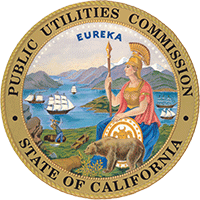2025 Potential and Goals Study
2025 Potential and Goals
The page includes all materials and data for the in-process 2025 Potential and Goals Study. It also includes information about past and upcoming activities conducted by the Commission during the process of creating the 2025 update of the Energy Efficiency Potential Goals Study. The Potential and Goals Study will inform the Commission's next adoption of updated Energy Efficiency Goals, scheduled for 2025.
2025 Potential and Goals Study Final Resources
- Final 2025 Energy Efficiency Potential and Goals Study
- Final 2025 Tableau Interactive Dashboard
- Final PG Study Measure Results Database
- Final PG Study Model User's Guide
- Final Analytica File
- Final 2025 PG BROs Input Database
- Final 2025 Study MC Input Database
- Final PG Study Report Graph Generator ZEAs Scenarios 1 through 3
- Final PG Study Report Graph Generator ZEAs Phased Scenarios 4 through 6
June 2025 Updated Results
Based on stakeholder feedback shared during the May 12, 2025 workshop, the Draft Results were revised to correct the savings values for all industrial, agricultural and custom impacts used as a top-down analysis to be based on net savings rather than gross savings, and the default net to gross value for non-direct install residential and commerical energy efficiency measures. Comments on the updated results are formal and should be filed under docket R.25-04-010, and are due no later than June 16, 2025. The ruling inviting comments can be found here.
- Updated Scenarios 1-3
- Updated Scenarios 4-6
- Updated 2025 Tableau Results Viewer (TBP)
2025 Potential and Goals Final Workplan
The 2025 Potential and Goals Final Workplan, which details the approach to the upcoming PGS cycle, is linked below:
Draft 2025 PGS Study Resources:
- Draft 2025 Energy Efficiency (EE) Potential and Goals Study (PGS)
- 2025 PG Study Measure Results Database
- CPUC PG Model User’s Guide
- CPUC_2025_PG_Model_PublicVersion.ana
- Draft 2025 PG BROs Ind Ag ComCust Input Database
- Draft 2025 PG Study MC Input Database
- PG Study Report Graph Generator 2025 -2030 ZEAS Scenarios 1 through 3* (Updated data is linked above under "June 2025 Updated Results")
- PG Study Report Graph Generator 2025- ZEAS phased Scenarios 4 through 6* (Updated data is linked above under "June 2025 Updated Results")
- 2025 CPUC PG Study Results Viewer | Tableau Public (Updated data is linked above under "June 2025 Updated Results")
*Comments on the draft and ruling are formal and should be filed under docket R.25-04-010. Opening comments are due May 23rd and reply comments are due May 30th. The ruling inviting comments and questions can be found here.
Upcoming Workshops and Stakeholder Engagement
None at this time
Past Workshops and Stakeholder Engagement
Draft Results
The CPUC hosted a webinar to present the Draft 2025 Energy Efficiency (EE) Potential and Goals Study (PGS).
Proposed Scenarios
The CPUC hosted a webinar to outline and discuss draft forecast scenarios under consideration for the 2025 Potential and Goals Study.
We solicited informational stakeholder comments and feedback on the proposed scenarios due by October 4, 2024 via email. Stakeholders were asked to consider the following questions:
- Based on the presentation summary, do the CPUC staff proposed scenarios capture a reasonable range that can inform goal setting?
- C-E thresholds?
- Incentive levels?
- What key variables should be the focus of scenario design?
- Are there any structural factors that play into current PA goal attainment levels that should inform the study?
- CPUC staff aim to choose 4 scenarios - do you have suggestions for specific scenarios to consider?
- Do you agree with our proposed approach for modeling CARB's proposed zero-emission standard for space and water heaters?
- Should we model the proposed 2027 component differently? If so, how?
- Our analysis of FS potential will again incorporate the TECH incentives, reducing effective measure cost. Do you agree with this approach? Should other approaches or non-IOU incentives be considered?
- Is our inclusion of IRA tax credits statistics for the Residential Sector reasonable, including as a basis for our proposed high-IRA Scenario?
Measure Characterization
We solicited informal stakeholder comments and feedback on the proposed residential and commercial (ResCom) Measure list due by June 12, 2024 via email. Stakeholders were asked to consider the following questions:
- Are there additional measures or technologies that should be included? Or proposed measures that should be excluded?
- If so, which are the highest priority to incorporate into the 2025 Study?
- Do you have program and measure (including fuel substitution) data to share that’s not available via eTRM/DEER/Workpapers or CEDARS?
The Proposed Measure List and Overview README File are linked below:
Measure List Overview and Methodology_README
2025 Energy Efficiency (EE) Potential and Goals Study (PGS) Draft Workplan
2025 Energy Efficiency (EE) Potential and Goals Study (PGS) Updates
The CPUC hosted a webinar to present proposed updates to the 2025 Energy Efficiency (EE) Potential and Goals Study (PGS) model, and a revised timeline.
